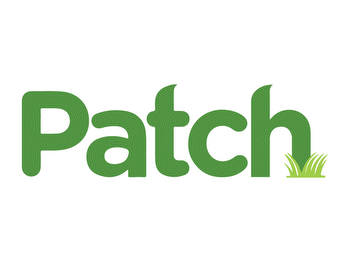Millennial Money: Getting therapy when cost is a barrier

The race to find mental health treatment can feel like a marathon when you may not have the energy or ability to even make it to the starting line. You may be faced with limited affordable options and a lack of available therapists.
“Prior to the pandemic, we had an inadequate workforce to meet the mental health demand of the country,” says Vaile Wright, who has a doctorate in counseling psychology and is the senior director of health care innovation at the American Psychological Association. “And that has only been exacerbated by the pandemic.”
According to the APA’s 2021 COVID-19 Practitioner Survey, 43% of psychologists reported an increase in overall number of patients compared with 2020. At the same time, 41% of psychologists said they couldn’t keep up with demand and 46% felt burned out.
Thankfully, there are multiple ways to access care at a variety of price points, including telehealth options.
USE RESOURCES THAT YOU MIGHT ALREADY HAVE
Your employer may offer an employee assistance program, or EAP, which can connect you, your spouse or partner and your children with various services including short-term counseling. Review your benefits to see what your EAP provides, if you have one.
If you have school-aged children, their guidance counselor can be a helpful resource not just for academic concerns, but also for more personal, social and behavioral issues. College students may also have access to free or low-cost counseling services on campus.
And don’t forget primary care physicians and OB-GYNs. Annual preventative care visits, which are free with insurance, are an opportunity to talk about your mental health. Your doctor might prescribe medication or refer you to other practitioners. Dr. Carlene MacMillan, co-chair of the American Academy of Child and Adolescent Psychiatry Consumer Issues Committee, recommends setting aside time during your routine appointment to talk about your mental health.
“If you’re healthy mentally, physically it’s easier to take care of whatever else is going on,” she says.
SEARCH FOR PROVIDERS WHO TAKE YOUR INSURANCE
You can search for in-network providers through your health insurance company, but MacMillan cautions that the information there might be out of date. Double-check with Psychology Today (yes, as in the magazine). Its website has a search tool you can use to find therapists, psychiatrists, treatment centers and support groups. According to MacMillan, the search results from this tool could be more up to date than some insurance databases.
Alma and Headway are two additional websites where you can search for providers who accept your health insurance.
ASK IF THERAPISTS OFFER REDUCED PRICING
Many therapists set aside appointment slots for patients who can’t afford the full hourly rate. Ask therapists in your area if they accept patients on a sliding scale, meaning they lower their rates based on your income. And if you’re open to group therapy, that can cost less than seeing a therapist one-on-one.
You can also look beyond private practices. “Most places, at least cities, have community mental health centers that offer a sliding scale,” says Nance Roy, chief clinical officer at The Jed Foundation, or JED, a nonprofit with the goal of supporting and protecting mental health for teens and young adults.
Open Path is a nonprofit that can help you find affordable care if your household income is less than $100,000 a year and you either lack health insurance or your insurance plan doesn’t offer mental health benefits . You can join their mental health collective by paying $59 for a lifetime membership. From there, you’ll be able to access therapy for a per-session fee of $30 to $60 for individual counseling, or $30 to $80 for couples or families.
TURN TO TEACHING HOSPITALS
Hospitals and universities in your area may have programs where you can see a clinician in training, who is supervised by a licensed practitioner, for a lower cost. Look for local teaching hospitals or colleges with psychology programs.
GET HELP VIRTUALLY
Use of telehealth expanded because of COVID-19, when privacy regulations adjusted to allow more ways for patients to communicate with medical professionals. Even now that in-person appointments are back, virtual appointments are still an option that’s especially convenient for anyone who previously had to take off work or pay for a babysitter to attend sessions.
“The possibilities of how you can consume mental health care is where the disruption really happened,” says Heela Gonen, vice president of strategic partnerships and communications at BetterHelp, an online therapy platform. “You see that people are not going back.”
Mental health platforms like BetterHelp and Brightside make it possible to communicate with a therapist on a video or phone call, or through text. For kids and teens, MacMillan recommends Little Otter and Brightline.
ADD ON SOME SELF-CARE
While you search for a therapist, or in between appointments, it can be helpful to incorporate mindfulness practices into your day, like meditation, breathing exercises or even just going for a walk and observing everything around you.
“The research is clear on the value of mindfulness in terms of promoting mental health,” Roy says. “It’s not about stopping your thoughts, it’s about letting them pass.”
This column was provided to The Associated Press by the personal finance website NerdWallet. Sara Rathner is a writer at NerdWallet. Email: srathner@nerdwallet.com. Twitter: @SaraKRathner.
The 2021 American Psychological Association’s COVID-19 Practitioner Survey was distributed to approximately 26,400 doctoral-level active licensed psychologists in the United States from Aug. 30 to Sept. 17, 2021. A total of 1,141 psychologists responded to the survey, yielding a response rate of 4.3%.




































